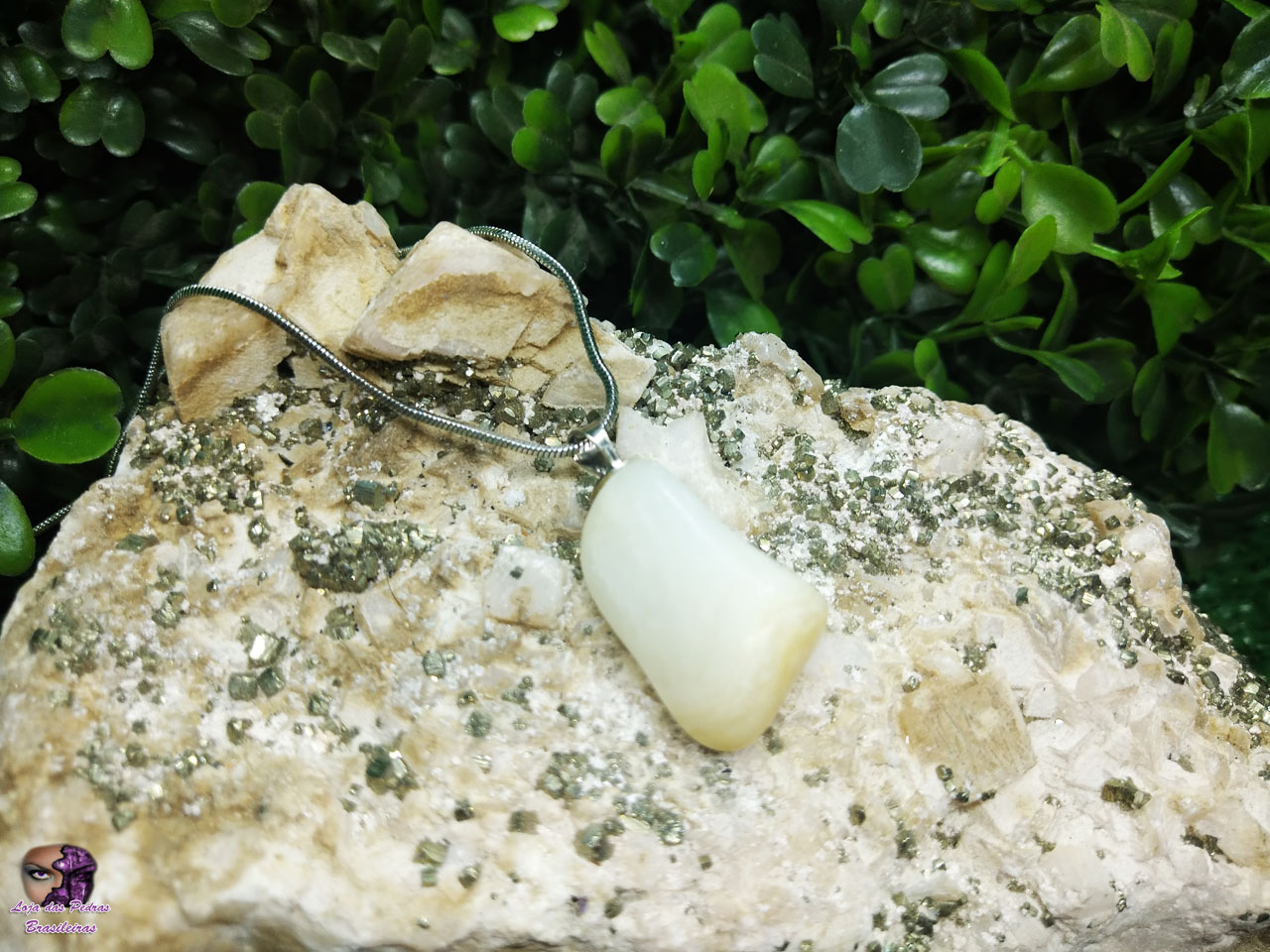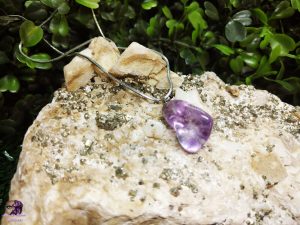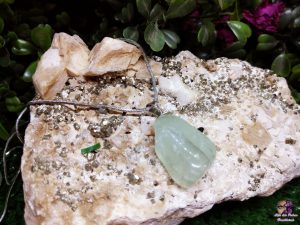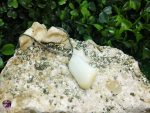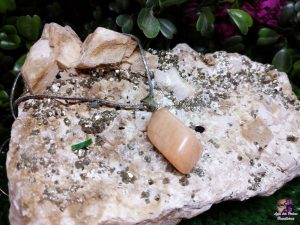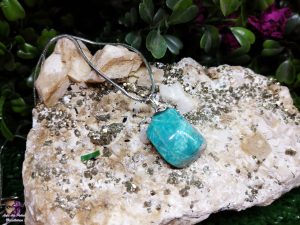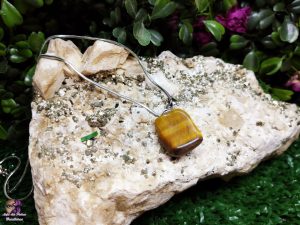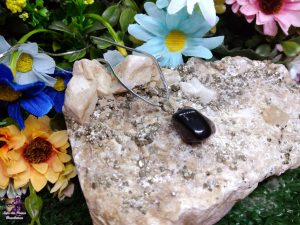Tumbled Stone Pendant in Alabaster with 925 silver plating from Brazil (chain not included). Alabaster is a designation applied to two distinct minerals: gypsum (hydrated calcium sulfate) and calcite (a calcium carbonate). The first is the alabaster of the present day; the second is generally the alabaster of the ancients. The two types are easily distinguishable from each other by their relative hardness. Gypsum alabaster is soft enough to be scratched with a fingernail (hardness 1.5 to 2), while calcite alabaster is too hard to be scratched in this way (hardness 3), although it yields to a knife. calcite, being a carbonate, effervesces by reaction with hydrochloric acid, instead of gypsum alabaster, which is practically unaffected by this acid. Alabaster is a massive and translucent variety of gypsum (gypsum), with minute crystals, generally white, with elongated, parallel light spots. The following shades may occur: yellow, gray, red, brown and orange. Widely used in the production of ornamental objects. Because it has low hardness (2 on the Mohs scale), it is easily carved and turned on rudimentary lathes. It can also be polished easily. In the trade, a translucent variety of marble, much like gypsum alabaster, is also known as alabaster. It differs from this due to its greater hardness (3 on the Mohs scale), and therefore cannot be scratched by a fingernail. Although some people consider it to be Marble, this hydrated calcium sulfate is a “soft” mineral that allows you to carve the most elaborate shapes. – even used in ancient Greek temples. By the way, some ancients believed that Alabaster was sent by the gods to show them how fragile and vulnerable human life is - and that this stone would be a great talisman against the wrath and displeasure of the gods. Unlike Selenite (which is a fibrous variety), Alabaster is a more compact species of what we know as gypsum. Also called by some people Satin Spar, the name Alabaster can be used to designate two different “products”: gypsum (as hydrated calcium sulfate) and Calcite (which is a calcium carbonate). This is why Alabaster is considered a type of Calcite. It can be said that gypsum would be closer to the Alabaster used today, while its closest variation to Calcite would be the Alabaster used by ancient people (so much so that, when cut into thin sheets, it becomes translucent enough to be used in windows, almost like glass – a practice widely used in medieval churches, especially Italian ones). Its name is due to the fact that Eastern Alabaster is widely used for the production of small perfume bottles and ointment vessels (called Alabaster). The most famous Alabaster in the world is extracted in the Tuscany region of Italy. When they wish to reduce the translucency of this Crystal (to give it more opacity), some people place them immersed in Water and heat them gradually, until they reach close to the boiling point. There is also a rarer variation of it (seen only in Oklahoma, China and Italy) known as Black Alabaster. This mineral was also widely used by the ancient Egyptians to carve figurines and sanctuaries, it was considered by them as an excellent bridge to the stars and the gods. This crystal brings us courage to manifest kindness, tenderness and Love, it provides the connection between the known and the unknown (or the visible with the invisible). It acts as a bridge to the future and to more alternative realities in relation to your current reality, helps us travel through multiple dimensions, great for people who talk a lot and listen little (as it encourages listening), reduces repressed anger, dispels blockages emotions that are behind diseases (especially in the heart and arteries). Some people consider that when something made of Marble/Alabaster cracks or breaks, it is a sign that this piece saved you from an accident, disaster or any type of bad thing because This stone removes negative energies coming from our surroundings, helps us make the right decision in difficult times and helps its bearers avoid the wrath of their bosses.ALABASTRO TECHNICAL SHEETElement: AirHardness: 3 MohsChemical composition: Gypsum and Calcium CarbonateEffects esoteric and psychic:GentlenessLoveTendernessSoftnessConnectionReduces repressed anger Dispels emotional blockagesDecisionsDispels negative energiesTherapeutic effects:HeadacheToothacheCirculatory systemKidneys
Tumbled Stone Pendant in Alabaster
R$ 9,00
8687.jpg
In stock

